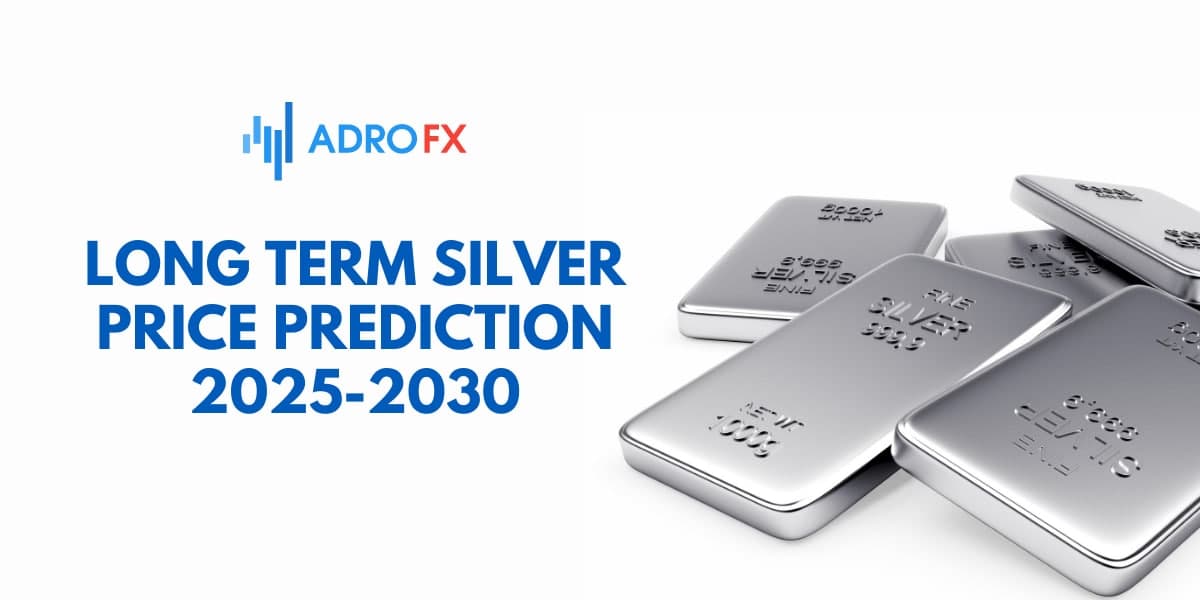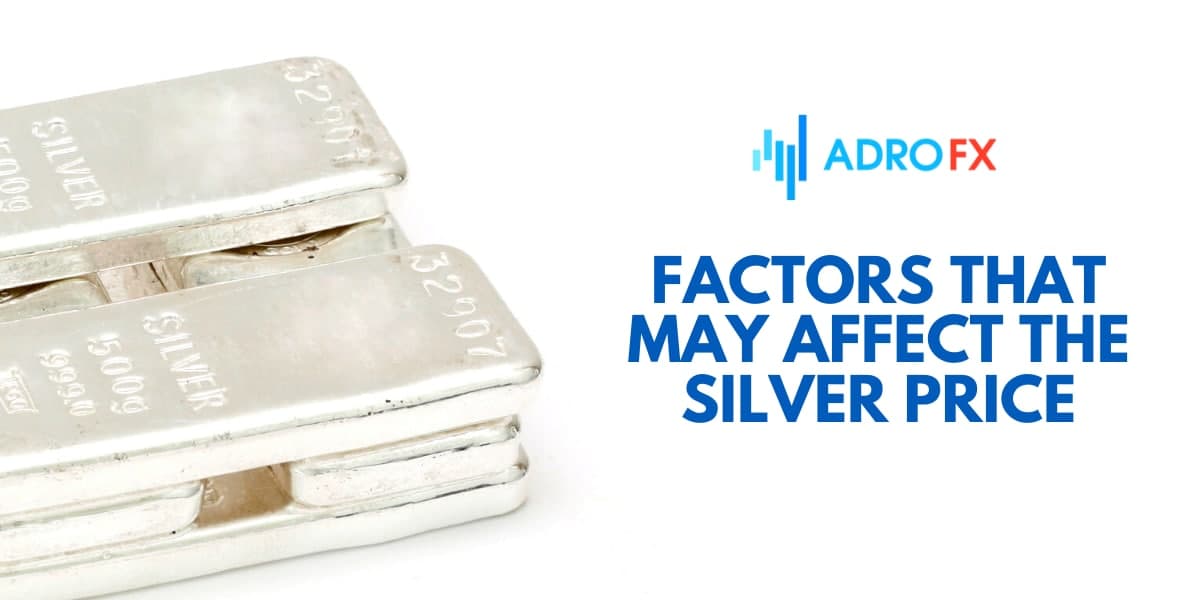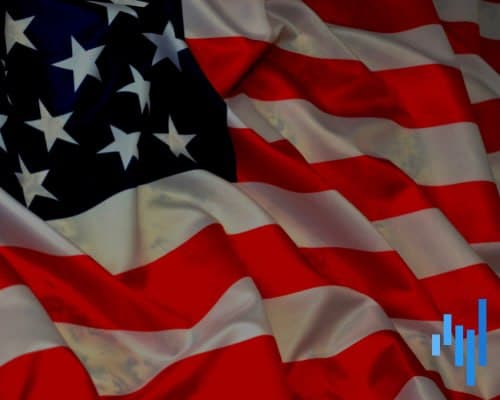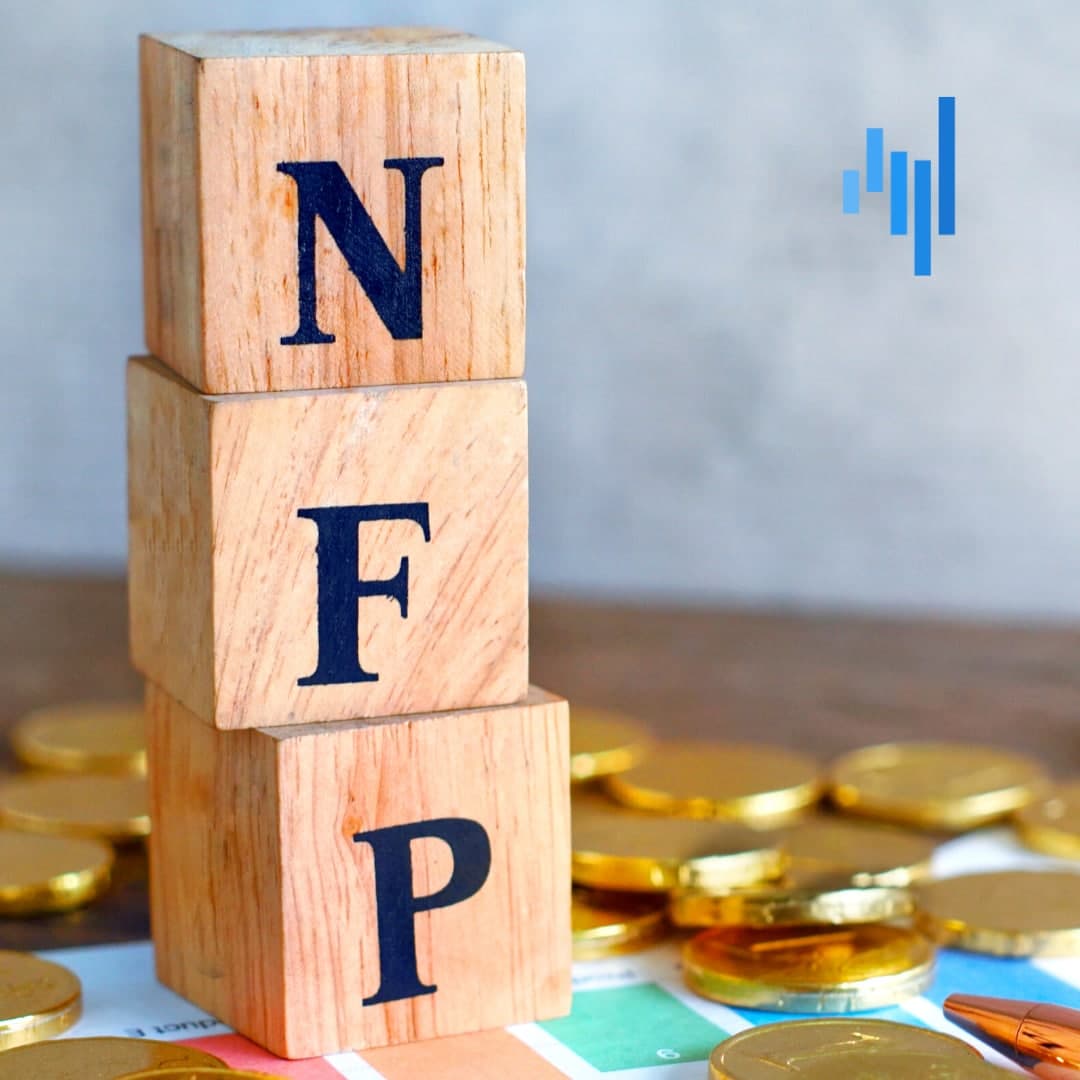NFP 03.09.2021. Что ждать и к чему готовиться?
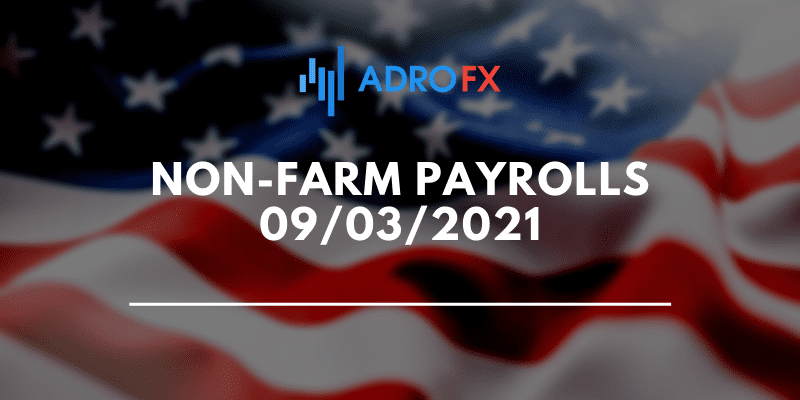
Пауэлл придерживался линии ястребов, выступая в Джексон-Хоул на прошлой неделе, однако избегал конкретики, чтобы сохранить пространство для маневра. Глава ФРС сообщил, что сворачивание QE может начаться в этом году, что рынки поспешили учесть уже как достоверное событие. Вопрос в том, когда будет сделано соответствующее объявление – в сентябре или ближе к концу года. Сентябрьский сдвиг в политике ФРС, скорее всего, потребует сильный позитивный сюрприз в отчёте NFP за август.
Большинство коллег Пауэлла высказывались за то, что сделать объявление по QE в сентябре и уже в 1-2 квартале 2022 года распрощаться с антикризисной программой смягчения. Однако Пауэлл заявил, что, «возможно», будет уместным начать сокращать активность ФРС на рынке трежерис в этом году, при этом решение будет приниматься с оглядкой на входящие данные и динамику дельта-штамма осенью.
Занятость в несельскохозяйственном секторе (Non-Farm Payrolls)
Прошлые данные: 943K
Консенсус-прогноз: 750K
Изменение числа занятых в несельскохозяйственном секторе измеря менения числа занятых в течение последнего месяца в несельскохозяйственном секторе. Общее число занятых в несельскохозяйственном секторе составляет около 80% рабочих, которые производят весь объем валового внутреннего продукта Соединенных Штатов.
Это самая важная часть данных, содержащихся в отчете по занятости, который предлагает лучший обзор экономики.
Ежемесячные изменения и корректировки данных могут быть весьма волатильными.
Заработная плата (Average Hourly Earnings)
Прошлые данные: 0.4%
Консенсус-прогноз: 0.3%
Данный индикатор отражает изменение уровня средней почасовой заработной платы для основных видов промышленности, за исключением сельского хозяйства.
Уровень безработицы (Unemployment Rate)
Прошлые данные: 5.4%
Консенсус-прогноз: 5.2%
Коэффициент безработицы определяет процент от общей рабочей силы, которая является безработной, но активно ищущей работу и готовых работать в США.
Высокий процент свидетельствует о слабости на рынке труда. Низкий процент является позитивным показателем для рынка труда в США и следует воспринимать как положительный фактор для USD.
В прошлую публикацию данных, движение на валютной паре EUR/USD в моменте составило 33 пункта:
При этом развив движение в 68 пунктов в течении нескольких часов:
Silver Prices Forecast 2022
Considering all the above mentioned, we can say that the silver market is likely to remain balanced over the next few years unless significant new points of demand growth emerge.
These potential points include the development of 5G networks, smart grid management systems, and electric cars that use more silver than classic cars with internal combustion engines.
However, even these trends are unlikely to fundamentally change the demand for silver, and it will remain at around 1 billion ounces a year, or about $28 billion. That is a very narrow market if you compare it to gold or the same copper ($250 billion and $160 billion, respectively).
Therefore, the silver market has historically been relatively illiquid and quite easily manipulated, when one large financial player (or many small ones) can significantly raise the price of the metal with quite small investments. Historically this has ended in a price collapse, and we would not expect the price of silver to rise significantly above $28-33 per ounce in the medium term, and a long-term price of $20 per ounce is acceptable to most market participants.
As for the authoritative WalletInvestor, the average price of silver in 2022 is $27.89, while the maximum is $28.29.
Silver Prices Forecast 2023
Silver on the global metals market does not have the investment qualities of gold, but it is considered a good indicator of investor sentiment, as it is used in industrial production.
The fundamental outlook suggests that investors can expect a rally in silver closer to the end of this year.
First of all, the long-term price is supported by a strong excess of demand overproduction - the available sources of silver continue to decrease, the cost of production is growing, and producers have to use stocks. And this is even though the investment component in the demand for the metal will rise.
Estimates suggest that the next 3-5 years will allow industrial demand for silver to add another 40% even if the recessionary mood in Europe and China persists.
So silver mining companies have the potential to make good profits over the long term, especially if they invest wisely in their operations.
If we refer to some concrete figures, analysts at WalletInvestor suggest that by 2023 the average price of silver will be $31, with the minimum and maximum of $28.43 and $32.46 correspondingly.
Long Term Silver Price Prediction 2025-2030
Because of the rush in demand, analysts do not undertake to provide any silver price predictions for 2025. However, from a fundamental point of view, silver looks like a very promising investment, experts say. A high share of industrial consumption of silver means its price is sensitive to the world macroeconomic situation. This metal should prove itself well in the recovery of the world economy after the coronavirus.
Still, WalletInvestor experts (as always) have some ideas about silver price predictions for 2025. They think that the maximum price can be up to $41.19 and the minimum is $36.82.
Moreover, there is even a forecast for 2026! Where the average price is $42.7 and the maximum is $ 44.66.
How Has the Price of Gold Changed Over Time?
In November 1919, one ounce of silver cost $1.13. From then until mid-1932 the value of this precious metal gradually declined until it reached $0.28 per ounce. Such a dramatic decline was due to the overall sad picture of the U.S. stock market, caused by the Great Depression. But it wasn't a coincidence. Silver is a fundamental asset and a metal used in industry. Its price is mainly influenced by industry use and demand. Its role as money is of secondary importance.
The economic depression and deflation have led to significant declines in the prices of many goods and services, including raw materials. Ironically, commodities survived their own "deflation" during the wild '20s. It was the only decade before the stock market crash of October 1929. The Great Depression only accelerated the decline in the value of silver.
The demand for silver first took off in 1942. At the height of World War II, the metal and its derivatives were vital to the production of radio stations and Enigma encryption machines. It was then that demand greatly exceeded supply, and this trend continues to this day.
It is reasonable to consider the dynamics of silver price growth since 1970. It was from this period that the price range and a complete list of factors influencing it were formed.
The first price explosion occurred in 1980, which caused the following reasons. First, American oil magnates of the Hunt brothers bought up 30% of the silver reserves in the world (they bought the largest silver deposits in Mexico). Secondly, the fourth scientific and technological revolution was beginning and the number of printed circuit boards for computers and communications increased by several orders of magnitude. The price increase was 700%, and this far exceeds the profits that can be obtained even at the risk of trading CFDs.
If you look at the silver charts, you get the impression that the metal is in a very long-term bullish trend. Its price has been rising for decades and the 90-day trend seems to have formed good support. The price's initial rise began between 1940 and 1980. Since 1980, the silver market has seen extreme volatility, but the uptrend is less and less visible.
The extreme volatility of the price of silver makes it difficult to invest in this precious metal over the long term. Therefore, investors should look for profitable entry points, rather than hoping for time. For example, if you bought silver in 1980 at $36, you would have had to wait 31 years for low prices for this precious metal. It wouldn't be until 2011 that you could make some money on it.
If you had kept silver all that time and sold it for $48, you would have earned 33%. It turns out that the annual return on silver is at 1% - that doesn't even cover the annual increase in inflation. That was the good news.
The bad news is that we haven't accounted for inflation over the years. Buying silver at $36 at the peak in 1980, and selling it at $48 in 2011, we have a loss of 53%. So, one ounce of silver would have to be worth $125 now to match the $36 price in 1980.
It is worth remembering that the historical record price of silver is now $49.45 per ounce, which was reached in January 1980. Since then, it has never been possible to break that mark. Therefore, it is safe to say that the real value of silver is now only 1/5 of the price we saw in January 1980. Simply put: a $1 invested in silver in January 1980 is now $0.20. Therefore, only a rise in silver to $125 per ounce will be able to equal 1980 high.
The second price hike occurred at the turn of 2010-2011 and was associated with a serious financial crisis, as well as the mortgage crisis in the United States.
The price reached the $48.60 per ounce mark in 2011. The fundamentals of the market were seriously undermined and only silver became a safe-haven asset that brought in substantial annual income.
After reaching this historic high, there was a collapse of its value by 70%. The low was $11.77 in March 2020. Then there was a recovery and a rise to nearly $30 in August 2020. Silver is currently trading at $24.09.
Factors That May Affect the Silver Price
As we have mentioned, the dynamics of silver are a clear indicator of investor sentiment. This metal belongs to the group of industrial metals, so the dynamics of such parameters as silver rate depends on the development of industry, production, and economy.
The rate of gold for a long time remains practically unchanged. Silver appreciates and depreciates much faster. First of all, it is connected with big amounts of mining this precious metal, but not only. Unlike gold, which as a rule does not lose in value, it can often become very cheap, but also its price can rise significantly.
To better get the idea of where the price is going, let us have a look at the factors affecting the rate:
Precious metals such as gold, silver, and platinum can be used to mitigate the effects of inflation, deflation, or currency devaluation on a country's economy. Usually, when a country's economy suffers from any of these problems, proceeds from bonds, stocks, and real estate are used as a hedge against financial stress. However, if all this fails to adequately compensate for risk and inflation, the demand for gold and silver and other alternative investments increases. However, after a period of financial stress, gold and silver prices may fall again as traditional investments become more attractive.
Gold and silver can be short sold in either physical or futures markets, and negative delta positions can be taken in many other derivatives. Short selling is an abuse of buying stocks without first finding a source to borrow the stock. Many believe this often leads to artificial suppression of the market.
Short selling is done by speculators who have no plans or ability to deliver their wares but intend to close their position before their contracts expire. According to many, the centers of unscrupulous short selling are around the London Bullion Markets Association, the U.S. Federal Reserve, and banks such as JP Morgan Chase and HSBC. For years, observers of the gold and silver markets have noted that gold and silver prices are artificially falling at the start of New York trading.
In recent years, the practice of recycling has become so common that this industry alone has become a multi-billion-dollar industry. Services that offer people cash in exchange for their old, broken, or mismatched jewelry are becoming increasingly popular, both offline and online.
Silver recycling affects global silver prices, and the impact is felt more in places where the practice is more common. However, this is partly because many "buyers" of used metal take advantage of their customers by paying a fraction of what the silver is worth.
Historically, oil has shown a strong correlation to silver in terms of price. Since the 1960s, silver, and oil prices have correlated with a coefficient of 0.7.
Some have argued that the strong correlation is because silver mining is energy-intensive, and therefore, as oil prices fall, silver prices will also rise or fall. Nevertheless, this argument downplayed many other essential factors.
What Is the Future of Silver? Is Silver a Good Investment?
So, what is the advantage of using silver as an investment?
The main advantage of this metal is its ever-increasing influence on the economic component on a global scale.
It is due to its active use in the industry. The electronics, health care, medicine, the military-industrial complex, and other industries could not develop without this metal.
Silver is also actively used in the jewelry industry, but it is only a small portion, about twenty percent, of its total use.
Silver reserves are gradually depleting, while demand for it is constantly growing, which is why investors underestimate the growth of their value.
It is recommended that every trader invests in silver given its potential.
At least a small part of an investment portfolio should be allocated for this kind of investment. It will help diversify it and have an additional reliable asset in the portfolio.
You should invest in silver when the market is quiet and not when the price of silver goes up.
Summing up the possible prospects of silver price rates, we can say that almost all the experts` estimates are pretty optimistic, especially taking into account the increasing popularity of green energy and electric vehicles. Indeed, the green transformation could be a powerful support for silver demand in the industry. Silver is needed for solar panels, and many countries are starting large-scale renewable energy projects.
In addition to solar power, silver is also actively used in the production of electric cars. High electrical conductivity and corrosion resistance make the use of this metal in electronics essential. According to forecasts, by 2040. 49% of all silver produced in the world will be used in the production of electric cars. Therefore, the development of a green economy in the world could lead to shortages of this metal and an increase in its price in the long term.
About AdroFx
AdroFx is an international brokerage company, offering a wide range of online trading services in different asset classes.
The company is distinguished by one of the best trading conditions on the market, minimal spreads, market order execution, and leverage up to 1:500. The broker is perfectly suited for strategy testing and automated trading systems due to micro accounts, ECN/STP order execution, and the absence of restrictions on using instruments and trading strategies.
